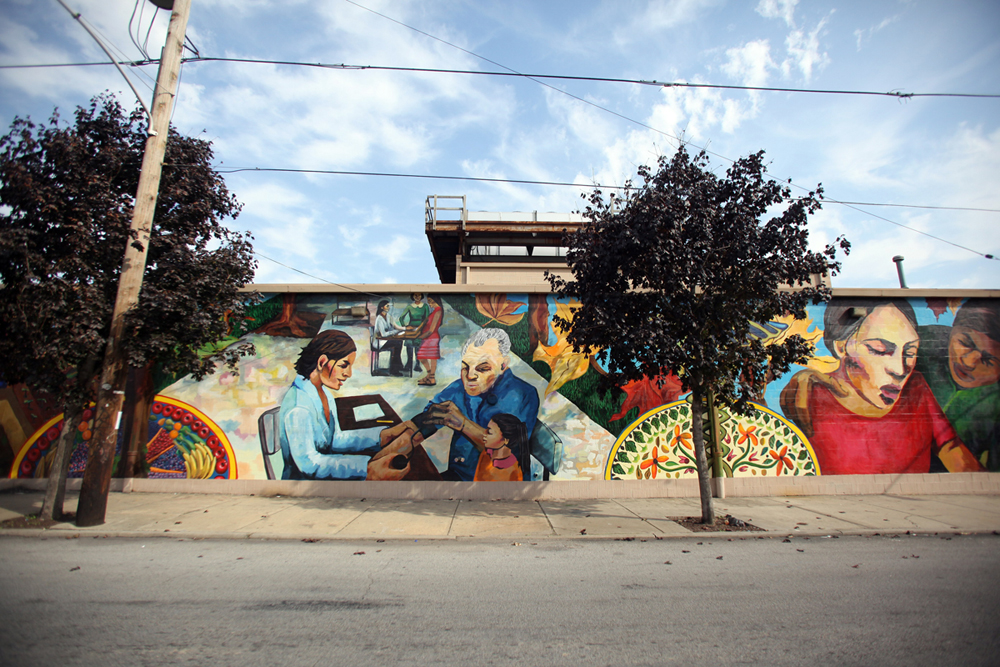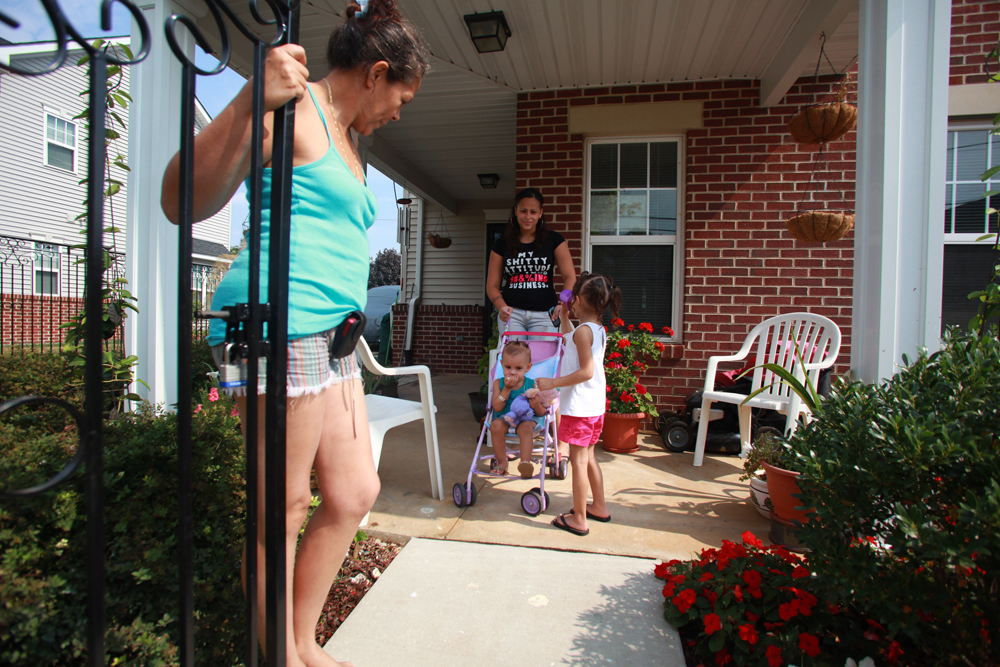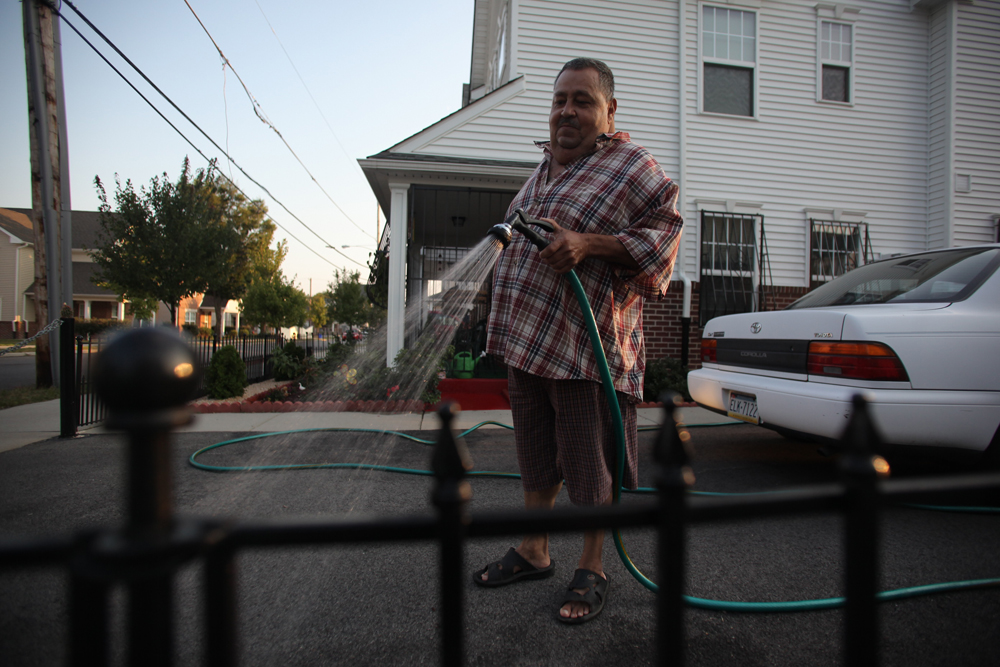The rewards of redevelopment: stabilization and safety
A five-minute tour of Eastern North Philadelphia is enough to convince most anyone that the neighborhood is on the rebound: the abundance of newly built homes and cleaned and greened lots awaiting development where vacant buildings once stood is evidence of that.
But a new report by the Fels Institute of Government at the University of Pennsylvania conclusively proves that the neighborhood’s improvements go well beyond the new bricks and mortar.
A survey of leading social indicators – from income, to crime, to education and more – shows that the blocks east of Temple University have become safer, wealthier and more attractive to working families than the neighborhood was before the building boom began.
“I find the fact that the area has improved at a faster rate than the city as a whole provocative. The data provides some real food for thought about the factors that influence positive neighborhood change,” said John Kromer, a senior consultant on the project who has also conducted an extensive survey of vacant land in the area.
The study boundaries match those used by Asociación Puertorriqueños en Marcha, a social services non-profit and community development corporation which has spearheaded the redevelopment of the area. The neighborhood, which covers just about a third of a square mile, has been the subject of series of Plan Philly special reports that have examined the area’s remarkable transformation.
“We’d already looked at the ‘what,’ the redevelopment activities, in the vacancy survey. With this report we wanted to look at the ‘so what.’ Are there follow-on effects after the redevelopment. Are properties any cleaner, are the streets safer, are families moving to this neighborhood,” said Christopher Kingsley, a Fels consultant and the report’s lead author.
What Kingsley and Kromer found is that while the APM neighborhood is still more dangerous and impoverished than most sections of Philadelphia, it is in remarkably better shape than it was just a decade ago.
For instance, crime rates fell by 37 percent in the neighborhood between 1998 and 2007, which is the most recent year data is available. That decline is better than the citywide falloff of 24.3 percent over the same period.
More telling was the drop in crimes against people, which includes robbery and aggravated assault. Those more serious crimes decreased by 41.6 percent in the APM neighborhood between 1998 and 2007, while not declining at all in the city as a whole over that period.
The neighborhood also saw growth in the percentage of residents with jobs, the report found. Between 2002 and 2008, total employment grew by 15 percent, and more than half of the workers earned at least $40,000 a year.
“You saw this huge exodus of people out of the neighborhood in the 1980s and 1990s. And now you have an average of 40 new workers in the area each year, and a lot of those are middle class people supporting middle class families,” Kingsley said. “Last decade, most people who could move out did, now you’re seeing people with the choice to live elsewhere moving in.”
Household income in the neighborhood increased as well, by 4.7 percent (in real terms) between 1999 and 2009, to a median of $18,655. That figure remains well below the city’s median of $36,222, but where median incomes are declining in the city as a whole, they are growing in the APM neighborhood.
Residents in the APM neighborhood are also better educated now then they were a decade ago. High school graduation rates are up to 51.2 percent from 44 percent in 2000. In percentage terms, those gains are about double the improving citywide graduation rate. The number of college graduates in the area remains extremely low, just 5.1 percent, but that too represents a significant improvement over the rate of a decade ago.
The new report finds that the neighborhood’s population has declined ever so slightly over the past decade, by .6 percent, compared to the citywide overall drop of 4.3 percent, an estimate based on 2000 census figures and private sector estimates for 2009. Kromer and Kingsley say it is possible that the new census may well show that the APM neighborhood in fact grew over the past 10 years.
One unanswered question is how much these improvements – in income, employment and education – have accrued to longtime residents of the area instead of new arrivals. It is a subject that Kromer says he would like to explore further in the future.
“It would be great to supplement this analysis with interviews on a block by block basis to get a much better sense of what really happened to individual families. That would get at gentrification questions, such as to what extent gentrification is really bad for longtime residents,” Kromer said.
Contact the reporter at pkerkstra@planphilly.com
WHYY is your source for fact-based, in-depth journalism and information. As a nonprofit organization, we rely on financial support from readers like you. Please give today.








